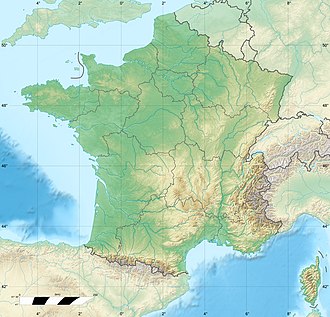| Strait of Bonifacio | |
|---|---|
 Strait of Bonifacio | |
| Location | Mediterranean Sea |
| Coordinates | 41°18′43″N9°12′46″E / 41.31194°N 9.21278°E |
| Type | Strait |
| Basin countries | France Italy |
| Min. width | 11 kilometres (6.8 mi) |
| Max. depth | 100 metres (330 ft) |
| Settlements | Bonifacio |
The Strait of Bonifacio (French : Bouches de Bonifacio; Italian : Bocche di Bonifacio; Corsican : Bucchi di Bunifaziu; Gallurese : Bocchi di Bunifaciu; Sardinian : Buccas de Bonifatziu; Ligurian : Bocche de Bunifazziu; Latin : Fretum Gallicum, Fretum Taphros) is the strait which connects the islands of Corsica and Sardinia. It is named after the Corsican town Bonifacio, the most southerly on the island, which was in turn named after Boniface I, Margrave of Tuscany, who founded a citadel in its location circa 828AD. [1]








